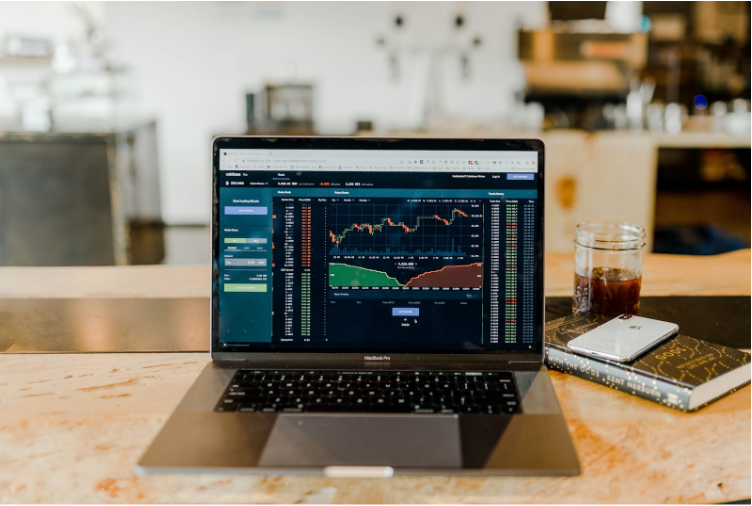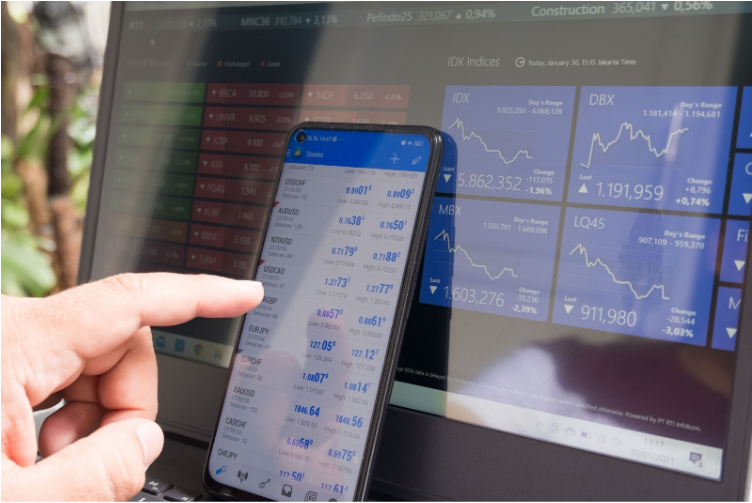Best Forex Trading Strategies in 2025

In this ultimate guide, we'll go through all the most effective Forex trading strategies every investor should know about. Just keep reading and don't forget to take some notes. Let's get to the point!
Table of Contents
What is Trading Strategy in Forex
How Trading Strategies Actually Work
Basic Forex Trading Strategies for Beginners
Advanced Forex Trading Strategies for Pros
Summing Up the Trading Strategies
Frequently Asked Questions About Forex Strategies
What Is a Trading Strategy in Forex?
A Forex trader's method for deciding whether to buy or sell a currency pair is known as a Forex trading strategy. In addition to technical analysis and fundamental research, traders can apply a variety of Forex methods. A solid risk management plan and market analysis are two key components of a successful Forex trading strategy.
How Trading Strategies Actually Work
Planning, making trades, and executing trades are the three steps of a standard trading strategy. Metrics related to the strategy are assessed at each stage of the procedure and adjusted in response to changes in the marketplace.
Basic Forex Trading Strategies for Beginners
Now, let's have a look at the Forex trading system you should understand – below, you'll see more detailed information about each trading strategy for beginners.
Positional Trading
Strategy description
Trades are held for weeks or even months when using the positional trading long-term trading technique. To find assets that are anticipated to appreciate in value over a longer period of time, this strategy entails examining market and economic patterns.
Risk level
A moderate to high amount of risk comes with positional trading. A strong risk management strategy must be in place for traders in order to be able to endure short-term market changes.
Reward ratio
Since positional traders try to capitalize on long-term trends and stick to their positions through substantial price fluctuations, the return-to-risk ratio can be considerable.
Length of trade
Positional trades often have a duration of several weeks to several months, depending on the underlying asset and the market environment.
Entry/exit point
Technical and fundamental analysis are used in conjunction to decide on entry and exit locations for positional trading. Traders can find probable entry and exit positions by using price charts, trend lines, and other indicators.
Example
Buying a stock with a low valuation but great financial performance and growth prospects is an example of a positional trade. In anticipation of the stock's value rising, the trader retains the position for a while.
Pros and cons
High profits and the capacity to identify long-term trends are two advantages of positional trading. The drawbacks include the necessity for a sizable amount of cash, the possibility of prolonged drawdown periods, and the requirement of a thorough knowledge of market fundamentals.
Trend Breakdown Strategy
Strategy description
A type of trading method known as the trend breakdown approach recognizes when a security's price has deviated from an earlier trend. In order to determine important levels of support and resistance, this method entails examining a security's price fluctuations. Trading opportunities arise when the price of a security crosses over a significant level of support or resistance.
Risk level
The trend breakdown method has a medium amount of risk. Prior to making a deal, traders must take care to prevent false breakouts and make sure the price has in fact crossed a crucial level.
Reward ratio
With the ability to initiate a fresh trade at the start of a new trend and ride it to sizable returns, the trend breakdown method has the potential to have a high reward-to-risk ratio.
Length of trade
Depending on how long a new trend lasts that a trader is trying to catch, the length of a trade using the trend breakdown technique might change.
Entry/exit point
When the price of the asset crosses through a significant level of support or resistance, the trend breakdown technique is initiated. Utilizing technical indicators or placing a stop loss to prevent further losses might help you choose whether to leave the trade.
Example
When a trader notices that a stock has crossed through a crucial point of resistance at $50, it is an illustration of the trend breakdown method in action. To prevent further losses, the trader opens a long account and puts a stop loss at $48, the current market price. The trader follows the new upward trend and closes the position when the price reaches $60.
Pros and cons
The ability to join a fresh trade at the start of a new trend, which may result in big gains, is one benefit of the trend breakdown method. False breakouts can happen, which is a drawback since they can result in possible losses if a trader opens a position too soon.
Swing Trading
Strategy description
Swing trading is a type of trading where investors try to take advantage of quick price changes that occur on the financial markets over a short period of time, usually between a few days and a few weeks. The common practice among traders is to utilize technical analysis to spot trends and momentum, then place trades based on these indicators.
Risk level
There is some risk involved with swing trading. As a result, there is a higher chance of market gaps and other unforeseen occurrences when positions are held over the course of a weekend or overnight.
Reward ratio
Swing trading may offer a good risk-to-reward ratio, with big earnings potential relative to the risk incurred on each transaction.
Length of trade
The normal duration of swing trades is a few days to a few weeks.
Entry/exit point
Traders place swing trades and close them based on technical analysis signals like moving averages, trendlines, and chart patterns. Risk management strategies and profit locking techniques are also often utilized.
Example
An illustration of a swing trade would be to purchase a stock that is uptrending and has just retraced to a crucial support level. The trader would then establish a stop loss below the support level and a profit objective at the following resistance level. When the price hits the profit objective, the trader would close it if it were profitable.
Pros and cons
Pros: Swing trading has the potential for huge earnings and favorable risk-to-reward ratios. Additionally, it takes less time than day trading strategies because traders just need to check positions occasionally during the day.
Cons: Swing trading involves some risk and necessitates a solid grasp of technical analysis. As traders must wait for the appropriate entry and exit signals, it also calls for self-control and endurance.

Trend Trading
Strategy description
An approach known as trend trading entails examining market trends and placing trades according to the trend's direction. Utilizing market momentum and holding positions for the duration of the trend are the objectives of this approach.
Risk level
Since traders must accurately recognize and follow the trend, trend trading may be quite risky. Nevertheless, risk may be controlled by utilizing stop-loss orders and staying away from trading in choppy market situations.
Reward ratio
Since positions may be maintained for a long time, trend trading has the ability to give high reward ratios and the chance of substantial gains if the trend persists.
Length of trade
The length of a trade in trend trading might range from a few days to a few weeks or even months.
Entry/exit point
Technical analysis and locating crucial levels of support and resistance are frequently used to pinpoint entry and departure positions. To support the trend and pinpoint probable entry and exit positions, traders may employ trendlines, moving averages, or other technical indicators.
Example
Finding an upward trend in a stock's price and initiating a long position are two examples of trend trading. The position is kept open as long as the uptrend continues, and it is closed when either the trend changes or the trader reaches their profit objective.
Pros and cons
The potential for substantial returns and the capacity to profit from significant market movements are advantages of trend trading. Cons include the necessity for precise trend identification and the possibility of substantial losses in the event that the trend abruptly reverses.
Range Trading
Strategy description
Identifying and trading inside a certain range of an asset's price fluctuations is the goal of the trading approach known as range trading. When a price reaches a level of support or resistance, a trader will either buy or sell.
Risk level
Range trading is thought to have a moderate amount of risk. Although there are obvious levels of support and resistance, the price might occasionally go outside of the range, which causes losses for the trader.
Reward ratio
Range trading often has a lower reward-to-risk ratio than other methods. For traders who can precisely estimate the range, it can still be beneficial.
Length of trade
Range trading is a short-term tactic; deals generally last a few hours to a few days.
Entry/exit point
Once the price of the asset reaches the support or resistance level, traders take a range trading position. They close out their trade when the price reaches the opposing level, their profit objective, or their stop-loss level.
Example
A trader may purchase a stock when it reaches $50 and sell it when it reaches $60, for instance, if the price of the stock is fluctuating between $50 and $60. The trader would cut his or her losses if the price dropped to $48.
Pros and cons
When there is little market volatility, range trading can be a solid approach. Additionally, it enables quick identification of prospective profit and loss margins.
Day Trading
Strategy description
Traders that engage in day trading purchase and sell financial products during the same trading day,. Profiting from short-term price changes in the market is the aim; this is often accomplished by taking advantage of modest price changes in highly liquid equities or currencies.
Risk level
Because it involves buying and selling stocks or currencies quickly, day trading is a high-risk technique. To prevent losses, traders must be able to manage their risk and restrain their emotions.
Reward ratio
Due to the possibility of daily earnings, day trading can have a high return-to-risk ratio. However, the amount of profit may differ based on the trader's expertise, knowledge, and experience.
Length of trade
Day transactions usually take a few minutes to a few hours, with the majority of trades being finished in a single day.
Entry/exit point
To choose entry and exit points for their transactions, day traders employ technical analysis and chart patterns. To control risk and curb possible losses, they frequently utilize stop-loss orders.
Example
Using a moving average crossover is one example of a day trading technique. An indication to purchase is when the short-term moving average crosses above the long-term moving average. The short-term moving average crossing below the long-term moving average is a sell signal.
Pros and cons
Pros:
- Traders can benefit from short-term market swings.
- Day trading can offer large potential gains on a daily basis.
Cons:
- Day trading may be stressful and emotionally demanding.
- To acquire the required abilities and information, a sizable amount of time and effort is needed
- To prevent losses, traders must practice self-control and carefully control their risk.
Retracement Trading
Strategy description
Retracement trading is a type of technical analysis trading method where assets are purchased or sold following a price retracement. This approach counts on the asset price maintaining its direction after a temporary reversal.
Risk level
Retracement trading involves varying degrees of risk based on the particular asset being traded, market volatility, and the trader's risk management strategies.
Reward ratio
The individual market circumstances and the trader's aptitude for correctly identifying retracement levels influence the reward ratio for retracement trading, which may also change.
Length of trade
Depending on the state of the market and the trader's objectives, retracement trades might range in duration. These deals are often of a shorter duration, lasting anything from a few hours to a few days.
Entry/exit point
Using technical analysis techniques like Fibonacci retracements, traders can identify critical retracement levels that serve as the entry and exit points for retracement trades.
Example
Purchasing a stock following a price retracement of 38.2% or 50% of a prior upswing with a stop loss order set immediately below the retracement level is an example of a retracement trade. The trader might then use technical analysis tools to find prospective price goals, and establish a profit target at the next resistance level.
Pros and cons
The possibility for huge profit margins, the ability to employ technical analysis tools to pinpoint important levels, and the speed with which transactions may be closed off are all advantages of retracement trading. Cons of this approach include the potential for misleading signals, the danger of losses if the retracement does not continue, and the requirement for rigorous risk management strategies.
The Bladerunner Trade
Strategy description
The Bladerunner Trade is a Forex trading method that uses price movement to spot possible transactions. By combining technical indicators and chart patterns, this technique aims to identify trades with a high degree of probability and accuracy.
Risk level
The Bladerunner Trade involves a considerable amount of risk. There is always a chance of receiving misleading signals and placing losing trades, because it includes trading based on price activity. Losses may be reduced, though, with effective risk management.
Reward ratio
The Bladerunner Trade can have a high profit-to-risk ratio. Winning trades may have a significantly higher potential value than losing trades, since transactions are often made with a strict stop loss and a higher profit objective.
Length of trade
The Bladerunner Trade can last for a variety of durations. Depending on the market and the particular trader's preferences, trades might be held for a few hours to many days.
Entry/exit point
Technical indicators like moving averages and support/resistance levels are frequently used to determine the entry point for the Bladerunner Trade. The profit goal or stop loss often determines the departure point.
Example
Using the Bladerunner Trade, a trader may, for instance, open a long position when the price of a currency pair crosses over a moving average and set a strict stop loss level below the moving average. When a specified profit objective is reached by the price, the trader may then close the transaction.
Pros and cons
The Bladerunner Trade has advantages such as the capacity to trade several currency pairs, the possibility for large reward ratios, and the use of technical indicators to spot high-probability transactions. The probability of erroneous signals and the requirement for effective risk management to reduce losses are potential drawbacks.
The Pop 'n' Stop Trade
Strategy description
The Pop 'n' Stop trade is a Forex trading tactic designed to profit from the market's momentum when it crosses a significant support or resistance level. When the price crosses through the resistance or support level, traders take a long or short position and watch for the price to "pop" up or down before making the deal.
Risk level
This method carries between moderate and high levels of risk. To avoid erroneous breakouts, traders must be able to precisely pinpoint important levels of support and resistance.
Reward ratio
Based on the intensity of the momentum and the extent of the price movement following the breakout, the reward ratio for this approach may be significant.
Length of trade
Depending on the intensity of the momentum and the trader's profit objectives, the trade may last a few hours to many days.
Entry/exit point
After the price crosses a crucial support or resistance level, traders enter the trade and watch for the price to "pop" in the breakout direction before doing so. In accordance with the trader's risk appetite and desired level of profit, stop-loss orders are set slightly below the support or resistance level.
Example
For instance, a trader utilizing the Pop 'n' Stop method would open a long position and wait for the price to "pop" up before making the trade if the price of a currency pair had been fluctuating within a range for a long time before it abruptly broke through a significant level of resistance.
Pros and cons
The Pop 'n' Stop technique can be a successful approach to take advantage of momentum in the Forex market, but it necessitates accurate identification of crucial levels of support and resistance and is susceptible to false breakouts. The best approach for traders to reduce their losses is by using risk management strategies like stop-loss orders.

Advanced Forex Trading Strategies for Pros
Now, let's move to the trading strategies for pros – below, you'll find several you should learn before you start.
News Trading
This trading method entails entering the market after news that might move the market. The goal of news traders is to anticipate how the news will impact the market and benefit from the resulting price changes. Due to the volatility brought on by news events, this technique can be dangerous, but for those who can correctly forecast market moves, it can also be rewarding.
Scalp Trading (Scalping)
Taking advantage of minute price changes in the market is the basis of the well-liked trading approach known as scalping. The goal of traders who employ this approach is to generate profits by quickly entering and leaving deals in a matter of seconds or minutes. They often trade frequently throughout the day and employ high leverage, frequently profiting from slight price movements.
Carry trading
Carry trading includes borrowing money at a lower rate in one currency, then investing it in a different one at a higher yielding rate. This will ultimately lead to a trade's carry being positive. The Forex market is where this tactic is most commonly applied.
The duration of a carry trade (weeks, months, and perhaps years) depends on the interest rate variations between the related currencies.
Grid Trading
The buy and sell orders in this trading method are placed at specified levels above and below the current market price. This tactic is used by traders to profit on the market's propensity to bounce between important levels of support and resistance. If the market encounters a quick and unexpected price change, this strategy may be advantageous in stable markets but may also incur significant losses.
Bounce Strategy
Many Forex traders think levels that mattered in the past might matter again in the future. This makes sense since the market would have considered this support level to be a good spot to purchase if it had declined to a certain level and then "bounced" back. Therefore, it may indicate a potential trading opportunity if the currency pair slips back to that level once more.
Running Out of Steam Strategy
Forex traders examine resistance levels similarly to how they do with support levels. Say the market reverses from its prior top at the resistance level and starts to decline. If the market is rising but then abruptly declines, the general perception is likely to be that the price is rising too quickly. The bounce tactic is mirrored in this Forex trading approach. In order to sell short and try to profit from a price decline, the trader waits for the currency pair to "run out of steam" close to the previous high.
Breakout Strategy
Price breakouts in either direction can happen at resistance and support levels since they are dynamic and subject to change. Prices are likely to break out if they go above key support or resistance levels. A significant shift in market attitude may be seen as a result, according to several traders.
For identifying current trends, this might be a successful Forex trading technique. There is always just one step to take. The breakout trading approach is frequently one of the first indicators when the market's direction shifts.
Overbought and Oversold Trading Strategy
In order to spot overbought or oversold market circumstances, this trading method makes use of technical indicators like the Relative Strength Index (RSI). Traders sell when the market is overbought, and they purchase when the market is oversold. The objective of this technique is to profit from sudden, sharp price changes in the market. This tactic, though, carries some risk because the market might remain overbought or oversold for a long time, resulting in losses.
Daily Fibonacci Pivot Trade Strategy
Only daily pivots are utilized in this trade. It can be extended to a longer timeline, though. Fibonacci extensions and retracements are combined. The number of pivots in a Fibonacci trade is infinite.
Overlapping Fibonacci Trade Strategy
This trading method includes locating probable market support and resistance levels using Fibonacci retracement levels. When the retracement level and a prior support or resistance level intersect, traders will employ this approach to join the market at that time. This strategy may be successful in markets that are trending, but it may also lead to losses if the market does not follow the Fibonacci retracement levels.
Summing Up the Trading Strategies
In conclusion, traders have access to a wide range of the best Forex trading strategies, each of which has certain advantages and is appropriate for various market circumstances. Before deciding on a strategy to employ in their trading activity, traders should carefully assess their trading objectives, risk tolerance, and market expertise.

Frequently Asked Questions About Forex Strategies
Still have any questions about the best trading strategies? If so, don't worry – take a closer look at our FAQ list below, which will definitely provide you with the answers to all of your remaining questions.
What is the easiest Forex strategy to use?
Scalping is one of the easiest trading techniques for newcomers to grasp. You must master the execution of orders and the closing of open positions in order to make the most of this technique. Understanding market signals and being aware of when to act quickly are also crucial.
What is the best timeframe for trading?
Since day traders want to enter and exit positions frequently throughout the hour and day, they find that using 15-minute time frames is useful. A major market trend can be determined using 60-minute time periods. Short-term trends can therefore be established using time spans of 15 minutes.
How do I learn Forex trading strategies?
You can educate yourself on Forex trading practices by reading trade-related books and articles online, watching instructional videos, attending webinars and seminars, using practice accounts, and consulting more seasoned traders.
What is the best strategy for scalping?
Beginners might use a one-minute scalping approach as a superb tactic. It entails starting a trade, making a few pip gains, and then quickly closing the position. It's recognized as one of the greatest trading methods and one of the simplest to grasp by many expert traders.
How do I make money on Forex?
You should be aware that trading on margin entails risk if you want to profit in the FX market. In essence, you are placing a wager on the future direction of the value of one currency in relation to another. Currency trading has a lower anticipated return than equities or bonds, and is comparable to the money market.
)